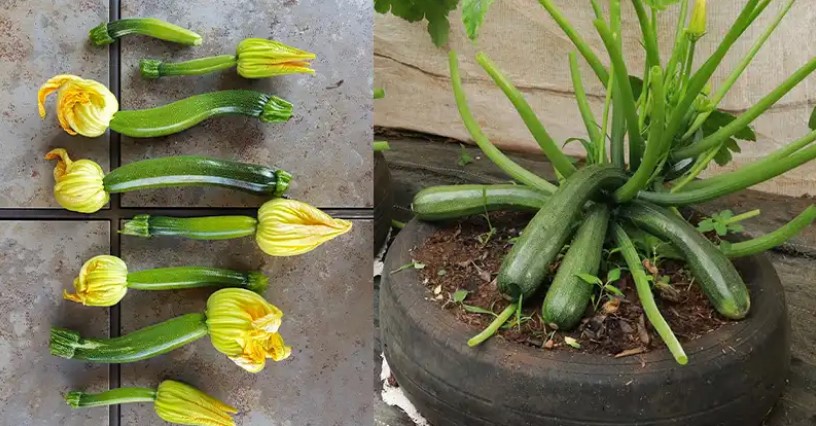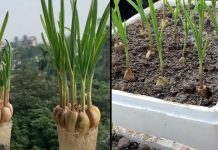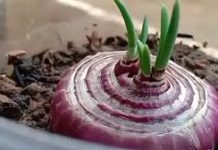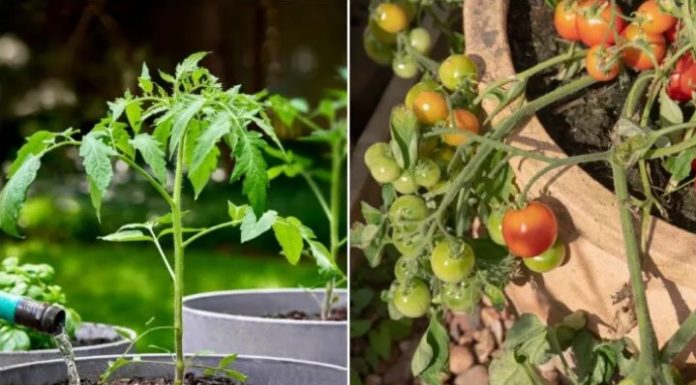Zucchini, also known as courgette, is a versatile and delicious summer squash that’s easy to grow in your home garden. Even if you have limited outdoor space, you can cultivate this nutritious vegetable by planting zucchini seeds in containers. In this article, we’ll guide you through the process of growing zucchini at home in containers from seed, making it a rewarding and accessible project for gardeners of all levels.
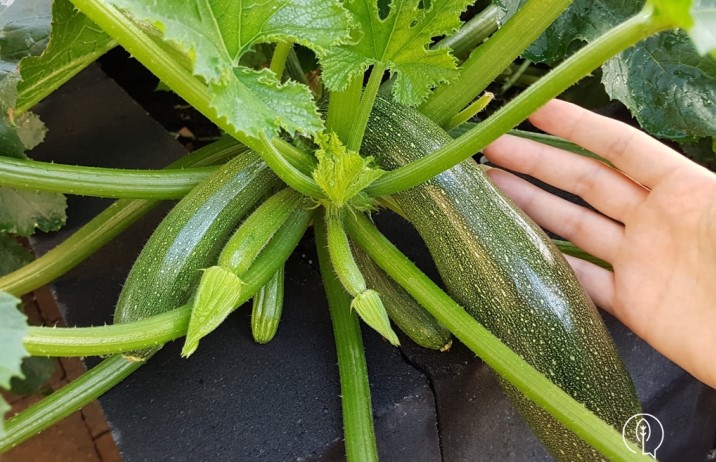
Choosing the Right Container
Selecting the appropriate container is the first step in successfully growing zucchini in a confined space. Here are some considerations to keep in mind:
- Size: Zucchini plants need room to spread, so opt for a container that’s at least 5 gallons in size. A larger container will provide more space for root growth and support healthier plants.
- Drainage: Ensure that the container has proper drainage holes to prevent waterlogged soil, which can lead to root rot.
- Material: Containers made of plastic or terracotta work well. Terracotta containers are attractive and provide good insulation, while plastic containers are lightweight and affordable.
- Location: Place the containers in a sunny spot that receives at least 6-8 hours of direct sunlight daily. Zucchini plants thrive in full sun.
Preparing the Soil Mix
Zucchini plants require well-draining and nutrient-rich soil. You can create a suitable soil mix for your containers by combining the following:
- Potting Mix: Choose a high-quality potting mix to ensure good drainage and aeration.
- Compost: Mix in some well-rotted compost to provide organic matter and nutrients.
- Perlite or Vermiculite: These additives help with soil aeration and moisture retention.
Planting Zucchini Seeds
- Seed Selection: Choose zucchini seeds from a reputable source. There are various zucchini varieties available, so pick one that suits your space and culinary preferences.
- Planting Depth: Plant zucchini seeds about 1 inch deep in the soil mix. You can plant multiple seeds in the same container but plan to thin them later, leaving only the healthiest plants.
- Spacing: If you’re planting multiple seeds, space them at least 24-36 inches apart to allow for proper growth and air circulation.
- Watering: Water the container thoroughly after planting to help the seeds settle and encourage germination. Keep the soil consistently moist but not waterlogged.
Caring for Your Zucchini Plants
- Thinning: Once your zucchini seedlings have at least two true leaves, thin them to leave only the strongest plant in each container. This will ensure ample space for growth.
- Fertilizing: Apply a balanced, water-soluble fertilizer every 2-3 weeks to provide essential nutrients to your zucchini plants.
- Mulching: Mulch the soil surface with straw or compost to retain moisture and regulate temperature. Mulching also helps deter weed growth.
- Support: Zucchini plants tend to become top-heavy as they grow, so consider providing support, such as a stake or trellis, to prevent the stems from bending or breaking.
Pest and Disease Management
Keep an eye out for common zucchini pests and diseases, such as aphids, squash bugs, and powdery mildew. Regularly inspect your plants and take appropriate measures, such as hand-picking pests or using organic pest control methods.
Harvesting Zucchini
Zucchini is typically ready for harvest within 50 to 60 days after planting. Pick zucchinis when they are about 6-8 inches in length, as they tend to be more tender and flavorful at this stage. Use a sharp knife or scissors to cut them from the plant.
Growing zucchini at home in containers from seed is a fulfilling and manageable gardening project, even if you have limited space. By choosing the right container, providing appropriate soil, and following proper care and maintenance, you can enjoy a bountiful harvest of fresh, delicious zucchinis. Happy gardening!


